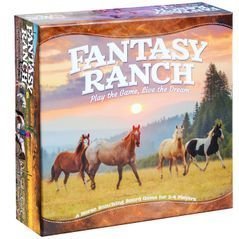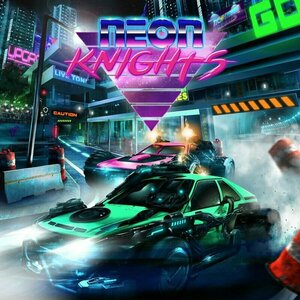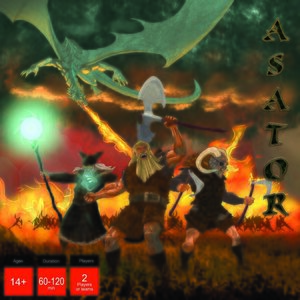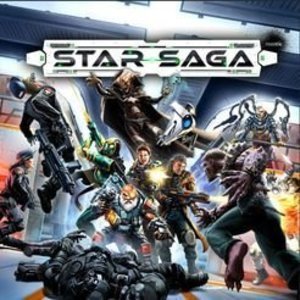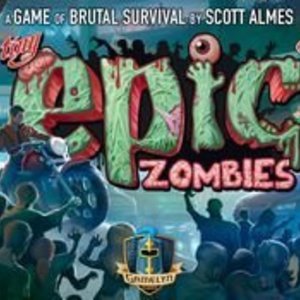
Tiny Epic Zombies
Tabletop Game
In Tiny Epic Zombies, survivors are always on the run, collecting weapons, killing Zombies and...
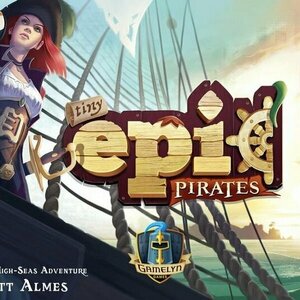
Tiny Epic Pirates
Tabletop Game
Tiny Epic Pirates is a 45 minute, 1-4 player game of high-seas adventure, utilizing a variable...
Purple Phoenix Games (2266 KP) rated Fantasy Ranch in Tabletop Games
Jun 12, 2019 (Updated Jun 12, 2019)
DISCLAIMER: The game comes with three modes of difficulty AND an included children’s game that also can be played on three modes of difficulty. For this review we are concentrating only on adult mode two. We felt mode one was too introductory, but we did not want to go all in right away on mode three. -T
As with most board games, you are trying to amass trophies (VP) and the winner at the end of five rounds is the rancher with the most trophies. On your turn you can take one Limited (standard) Action and as many Free Actions as you would like. Limited Actions include: buy a horse, buy a location on your ranch board, or farm your ranch for goods. Free Actions include: sell a horse, move horses to/from your home area to/from a different area on your ranch board, or trade goods at a 2:1 ratio. Once every player has taken their turn, you enter a show using the horses you have collected.
Buying a horse requires different amounts of food (in carrots) that you gain from different actions (farming your ranch, selling a horse). Luckily, spending food is a one-time action and you don’t have to feed your horses every turn. A great improvement over other “feed your villagers” games, in my opinion – yeah, I said it. Buying a location on your ranch board/playmat requires “tack,” which is symbolized by boot tokens (as seen below). You can always get more food and tack by farming your ranch, and you receive six goods of any combination, but that’s a Limited Action and prevents you from doing the other actions.
Selling a horse is easy, yet the separation anxiety is real, as you simply discard the horse for the amount of food it costs to purchase. Moving horses is easy too – your Home area of your ranch/playmat can only hold so many horses, so you will need to move horses of certain types to unlocked (purchased) matching areas on your ranch. This is important, as you cannot keep buying red horses or you will certainly run out of room for them, even if you unlock the red area on your ranch board. Plus unlocking sections of your ranch provides you with trophies at game end. The last free action is trading goods, which you do at a 2:1 ratio. So trade in two food for a tack or vice versa.
At shows you use horses for their specific specialty skills plus a die roll. Each horse has specialty in one area, and some skill in other areas. The number associated with a skill icon indicates the starting skill “strength” that you will add to your die roll. You roll all three dice of your color, take the highest result from the roll, and add the skill strength of the horse skill. That’s your score for the show. The highest number is awarded 1st place and the rewards printed, and so on and so forth for the other placing horses. This could result in more food or tack, or even your choice of horses for free from the sales barn.
On the very last turn of the game you will compete in three shows (instead of the normal two shows at the end of each turn) and can only use World Class horses, or buy your way into the show with food. The show process is the same, but it is the final push to earn as many trophies as possible before game end. And that’s it!
Components: This game is FULL of components. It’s a pretty stocked and heavy box, but still only the size of a Ticket to Ride box. The playmats, game boards, and cardboard chits are all of really great quality. The cards are great quality as well with photos of real existing horses (as well as the photos of real existing ranches on the giant ranch cards that are essentially beautiful player reference cards and resource holders). The best components of the game are the super cute little horeeples (oh no, that can’t possibly be correct). Horse-meeples. They come in different colors to match the areas on your ranch that you need to unlock and move them into so you don’t overcrowd your Home area. Even though my copy came with a green horse who lost his front legs, we know that he competes hard and lives his best life. The art is really really great and, though busy on the board at times, the game looks really good on the table. No qualms with the components on this one at all.
Here’s what I really like about this one. It’s a euro through and through, but it’s a euro that is actually exciting, with a unique theme, and one that I genuinely cannot wait to play again. I want to try mode three as soon as I can, and I really want to introduce my son to the game as soon as he is able to handle it. I am finding it really really hard to think of a game that comes ready to play three ways for adults, has components included to play the game three ways with children, and is actually super fun. I can’t think of any. This game is truly in a class by itself.
I love that no matter how tactical you play or how strategic you want to make it, sometimes the dice love/hate you and it could make all the difference. As you can see in the scores, we all love it (with the exception of my cousin Tony who rated it a three because of the dice – WHICH is odd because it is his father that was the harness racing jockey of the family). This review would have been live a week ago, but immediately after playing last weekend Josh said he would like to bring it home to play with his family. His wife is from Kentucky, and they kinda like horses and horse racing there. Well, his wife and son also rated this game out of 6. His wife gave Fantasy Ranch a 15 and his son rated it a 16. As that completely throws off my rating scale I did not add them, but as you can see we at Purple Phoenix Games give this one a very boot-kickin’ 19 / 24. If only we hadn’t invited Tony over to destroy the scores… We highly recommend you check this winner out. Seriously, it’s great.
https://purplephoenixgames.wordpress.com/2019/06/04/fantasy-ranch-review/
Purple Phoenix Games (2266 KP) rated Neon Knights: 2086 in Tabletop Games
Sep 10, 2020
Neon Knights 2086 (here forth known as NK) is a car racing game of customization and street battle. The game essentially takes place over three race weeks (rounds) with each week being divided into a preparation period and then the race day itself. The winner of NK is not necessarily the driver who crosses the finish line more often, but rather the driver who wisely invests in upgrades and tempts Lady Luck to be on their side during crucial dice rolls.
DISCLAIMER: We were provided a copy of this game for the purposes of this review. This is a retail copy of the game, so what you see in these photos is exactly what would be received in your box. I do not intend to cover every single rule included in the rulebook, but will describe the overall game flow and major rule set so that our readers may get a sense of how the game plays. For more in depth rules, you may purchase a copy online or from your FLGS. -T
To setup, separate and shuffle each different-backed deck of cards, set them on the board in their places, and display the number of cards equal to the card spaces on the board. Give each player components in their character color, the matching play mat, and starting car parts to be tucked under their mat. Determine the starting player who will construct the first race course out of the provided map chunks and the game may begin!
Again, I will not be explaining every rule in the game as there are just too many to cover, but the game is played over three weeks. During the preparation days leading up to the race on day 7 (Sunday I guess), players will be taking actions to draft upgrades to their cars, or implants into their driver’s BRAIN, getting themselves sponsored so they can make bank come pay day, and also accepting bets on how each driver can earn a little extra on the side come race day.
Each day leading up to the race will allow players to complete one action, and pay day is on Day 5. This is when players will be paid out by their sponsors thus allowing players more spending power at the various upgrade shops. However, Race Day looms ahead and drivers will be making sure they have the best car they can afford because racing is a matter of life or death.
During a race, players will be choosing their initial speed and traveling the course attempting to finish first to gain points, but also to inflict damage on opposing cars and trying to complete their bets they’ve made. Cars will typically travel the number of spaces that the driver has chosen as the speed for the turn, but along the way the cars will be passing over neon lights in the street that are colored according to the suggested speed to overcome them. Go too fast and players will need to roll damage dice to simulate clipping a curb or smashing into a building corner. Go the correct suggested speed or less and pass over the lights no problem and with no damage dice to roll. Of course, car upgrades can assist with this.
When cars end their turn on a space with another car, a battle ensues and damage is calculated. Also, either before or after movement a car can decide to use a weapon on a rival car in range of their weapon to inflict extra damage. After all, a well-damaged car must screech to a halt and possibly use precious resources to repair the damage. Races are flat out bonkers but are the crux of NK. The winner of NK is the player who can amass the most VP at the end of the game and will be able to run a victory lap in the streets.
Components. This game is one of those hefty 12×12 boxes that is packed with goodies. The board is huge. The player components are beautiful and amazing. The player mats are great and laid out really well. The big chunky street map tiles are big and chunky. The colors are perfectly ’80s and perfect for a board game. I have no issues at all with the components. Oh wait, just one little eensy weensy complaint. I wish the font in the rule book was something of the serif variety instead of block all-caps. I felt as if I were being scolded for reading the rules.
All that said, I find Neon Knights 2086 to be a beautiful and relatively quick-playing racing game with the added bonus of car customization akin to that of creating an RPG character (and everyone knows that’s the best part of RPGs). The prep days are super fast to play through because you are basically just taking cards from the offers or drawing cards from the face-down decks to improve your ride, or repairing your car from previous races, and negotiating with sponsors to get those sweet gigs.
The racing, however, is where the game play takes off. It’s here that all the planning and optimizing is put to the test. It’s here where you discover that some of your “upgrades” just ain’t cuttin’ it, and need to be upgraded further. Hopefully a new sweet (and affordable) weapon will come out during the week. Maybe a new sponsor will enter and entice you with tons of money. And then it’s Race Day and you can take your rig out to demolish the competition. Ahh sweet demolition.
This game was a big surprise for me for several reasons. First, I didn’t realize how much I actually enjoyed some of the things from the ’80s. Those colors are just so dang beautiful. That design. So good. But also I just don’t play a lot of car racing games so I was skeptical at first. I’m not a fan of NASCAR so obviously I won’t like any car racing game, right? At least that was my initial thought. Neon Knights 2086 may just have piqued my interest in trying out some other racing titles in the future. For these reasons, Purple Phoenix Games gives this one a bruised 8 / 12. If you are aching for a racing game with battles in the streets and customization in the sheets, check out Neon Knights 2086. I am now a believer, and can’t wait to play this one many more times.
Purple Phoenix Games (2266 KP) rated Asator in Tabletop Games
Oct 20, 2020
Asator is a head to head (or teams) game of troop maneuvering and attacking using 30 identical miniatures on each side. Each mini acts as a platoon of three different kinds of armies, plus a Chieftan, Master, Wizard, and Dragon that all have different special abilities. The winner of Asator is the player who can eliminate their opponent’s leadership (Chieftan, Master, and Wizard).
DISCLAIMER: We were provided a prototype copy of this game for the purposes of this review. These are preview copy components, and I know that the final components will be slightly different from these shown. Also, it is not my intention to detail every rule in the game, as there are just too many. You are invited to download the rulebook, back the game through the Kickstarter campaign, or through any retailers stocking it after fulfillment. -T
To setup, place the battle mat on the table, and then players will place groups of minis on the field within the closest three rows of hexes in alternating turn fashion. Players will also take the two large Battle Sheets and a dry-erase marker to keep track of every one of their minis’ stats throughout the game. Each player will also choose five of the given 10 Wizard spell cards to use for the game, and each spell may only be used once during the game. Once all army minis are placed, the first player will move up to 20 units on the battlefield and attack opponent armies if possible. The game is now on and decimation is the goal.
Each mini type corresponds to a different group of armies, plus the dragon and three leader pieces. All armies of the same type have the same stats for movement, hit points (HP), armor rating (AR), and attack weapons. Also each mini is labeled on the bottom so keeping track of each unit is made a little easier. Obviously the leader pieces are more powerful and each has a special style of combat. The Master wields an axe and shield (which is broken after one hit) to increase AR and dole out the damage. The Chieftan wields a spear, twin axes, a bow, and a shield. Similar to the Master, the Chieftan’s shield is broken after an attack against him, and his spear is broken after a missed attack. The Wizard is not at all strong in melee, but has powerful spells at his disposal to be used for the disposal of enemy units.
Besides the leadership trio each side also brings a Dragon to the battle. Dragons can move slowly by land, but quite quickly by air. Once in the air he or she may deliver a Fire Blast that causes huge damage, but then the Dragon must ground themselves to regain stamina for flight. In addition, each player will have access to Cavalry, Infantry, and Bowmen, each with their own stat blocks and abilities.
This is all well and good, and is somewhat similar to the strategy one would use in Chess. Combat, however, is much more involved than that of simply moving into an enemy’s space and automatically overtaking it. In Asator combat victory is decided via a VERY pared down version of D&D combat. It uses a simplified d20-based attack versus the enemy Armor Rating (AR). Rolls over the AR of the enemy is a success and damage is dealt. Done. Some attacks require a roll of 2d6 for damage amount, like spells and Dragon attacks. That said, combat is decided using 1d20 and 2d6. That’s it.
The game continues in turns where the first player will move their pieces and attack, and then the next player will do the same until one player has defeated all three enemy leaders and earned the title of Asator – Master of War.
Components. Again, we were provided a prototype copy of the game, but most of the components are what will be received when the game is backed or purchased. That said, the game utilizes a cloth battle mat that folds into the box, four dry-erase Battle Sheets, two dry-erase markers, dice for both players, Wizard spell cards for both players, and 60 miniatures. The battle mat is great fabric quality with minimal art that doesn’t get in the way of play (much appreciated). The dry-erase components are good. The card quality is fine. The dice are black and white dice to correspond with players using the black or white minis, and are of normal quality. The minis are great and I enjoyed playing with them.
Now for the negatives of what is included in the box. First, the art. Now, there is very minimal art used throughout the game. It’s just not a focal point, and it shows in the game’s production. I found the sketch on the cover of the rule book (which is the same as the watermark on the Battle Mat) to be very cool, but the box cover art leaves some to be desired. Similarly, the Wizard spell cards use very generic-looking art icons with text for explanation. I am most certainly being hyper-critical here because flashy art on these components are certainly not needed to play or highly enjoy the game. For my tastes, though, I would like to see more polished art on these pieces as the art is so sparse throughout.
But how does the game feel? It’s truly quite good. I don’t play many wargames or 1v1 skirmish style games, so to present me with something like this and for me to enjoy it as much as I have has to be a sign of something good. Again, I am no strategic war general, but being able to employ different strategies every game is exciting. Testing out the different combinations of Wizard spell cards is fun for a tinkerer. And, of course, playing with a bunch of minis is always good fun.
There is a good game here, and I absolutely love the combination of Chess maneuverability with the simplified RPG d20 battle system. It works well in a game like this where each piece owns a stat block of which players will need to be mindful. I didn’t quite mention my favorite part of the rules yet either: natural 20 on a combat roll equals insta-death. Yes, even to the Dragon, which happened in my very first game. THAT is a cool rule that tripped up tactics quite often in my plays.
All in all this game is a great example of combining a couple sets of mechanics that wouldn’t be expected and creating a great gaming experience from them. I invite you to back the game on Kickstarter when it goes live if you are looking for that special game that is unlike many others you currently own. If the art were spruced up a bit I would be fawning all over it, but even without impressive art I still find I have the twitch in my brain to play it again and again. I wonder how many natural 20s I can roll in a game. Great, now I want to set it up and see…

Gneo: To Do Task List and Calendar Manager
Productivity
App Watch
App Store Editors’ Choice & “Best of 2013.” Featured on TechCrunch, Inc., Business Insider,...
productivity
Peter Shephard (2822 KP) rated Star Saga in Tabletop Games
Feb 22, 2021
I opened the box and was blown away by the quality and quantity of the miniatures as well as the accessories. We are talking dozens of characters with great sculpts, as well as the doors and consoles etc which look fantastic (and to get these alone is a significant cost). Additionally, you get a couple of dozen deck tiles, which are perfect for many sci fi miniatures games, and can be used separately to the in-box missions, if you wanted to go it alone/freestyle for other players.
I watched one of the Play Through videos on YouTube, and decided to try it myself. The rules are pretty clear and easy to follow, and it does help that the first 2-3 suggested moves are spelled out in the rulebook.
The first mission is a 1-2 player mission; you can literally play the game on your own, and there is enough flex in the Nexus (read- GM) cards to give an unknown quality to the game. Controlling one Character only, it is fully meant to get you used to the game.
First time I played, I rolled poorly (with 4 dice, usually failing to hit, or having my hits blocked by armour/scenery) and eventually got swamped by lesser minions. The second time I tried it, I managed to get through to the objective and complete it; having said that, the first loss was still useful as it meant I could see what impact damage and wounds had on the character.
The second mission is a larger mission, controlling several characters with different rules, with locked doors and more enemies - the rulebook also suggest if you have 2 copies of the game, to play the 1st and 2nd missions at the same time - although I actually think there is enough pieces to play the 2 together from the one box with minimal adjustment (maybe a slightly shorter corridor, for example).
In short, although it doesn't have the same "freeflow" as something like the old gem Warhammer Quest, it is close, and is a great sci fi dungeon crawler. There are also lots of expansions, but I need to defeat these bad guys first...

All Jobs - Find a job all over the world
Business and Utilities
App
All Jobs - Find a job all over the world. __________________________________________________________...
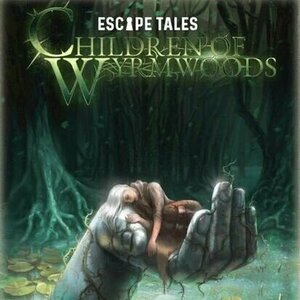
Escape Tales: Children of Wyrmwoods
Tabletop Game
Escape Tales: Children of Wyrmwoods is a story driven escape room in card game form, with immersive...
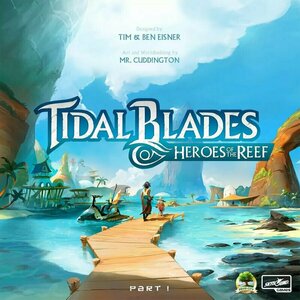
Tidal Blades; Heroes of the Reef
Tabletop Game
Welcome Heroes! Many magnificent contestants have signed up for the tournament but only a handful...
